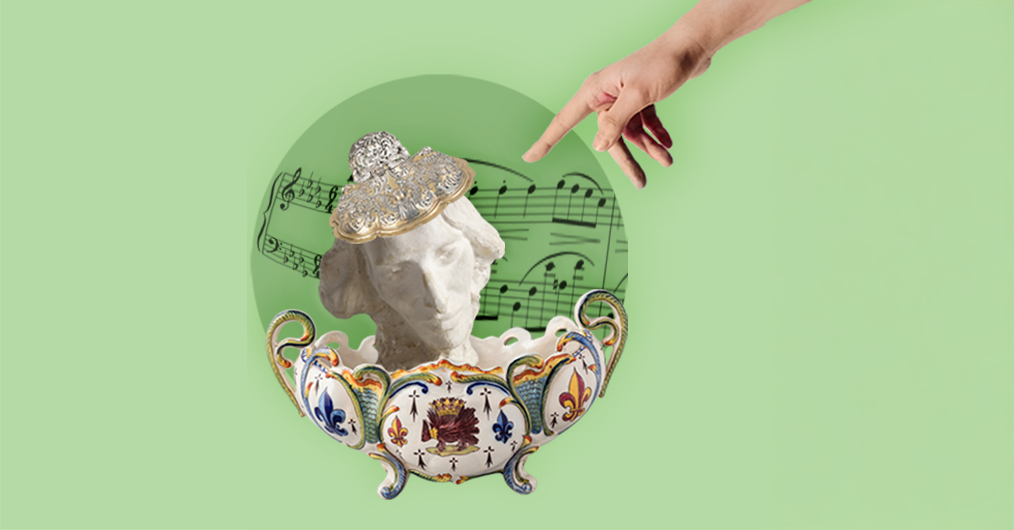Wawel tickets official site: bilety.wawel.krakow.pl
MUSIC
June 7 – August 31, 2025
Music, similarly to visual arts, has accompanied humans for a long time. It belonged to the sphere of sacrum – it was a tribute paid to gods, an element of religious ceremonies – but also to the sphere of profanum. Instruments and singing were a background for popular games and served as entertainment. By analogy to visual arts and literature, they were a way to express feelings and arouse them in a recipient.
Generally, we possess knowledge concerning the Ancient Era from artistic iconography. There are visual representations of events in which music played a significant role, and instruments were not only tools to produce sounds but also attributes of mythical gods, inextricably linked to their image. In Christianity, music was a link between God and a human, due to which symbolical instruments appeared in iconography. Their hidden meanings helped communicate content relating to prophecy and cult. In the Modern Era, in order to represent the idea of music, it was depicted allegorically as a young woman holding her attribute, i.e. Apollo’s lyre or another musical instrument.
Christian meanings of instruments were also present in the Dutch still life serving for communicating vanitas contents. Over time, the motif of the court concerts began appearing in art as well as barn dances – these scenes were frequently associated with a specific ideology that approved or condemned certain behaviours. In Romanticism, when the artist was perceived as a creator, composers were depicted in visual arts, and their work became the inspiration for future generations of artists, which is still true today. Music and art are irreversibly connected in the history of culture, which you can discover in this exhibition undertaking.
 Complementary tile with the representation of a bagpiper under the arcade, I/402/50; I/509/50; I/412/50; I/558/50
Complementary tile with the representation of a bagpiper under the arcade, I/402/50; I/509/50; I/412/50; I/558/50

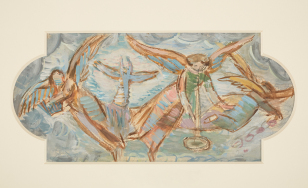 Zygmunt Waliszewski, “Musical Angels” – design of the middle “panneau” in the study of the Hen’s Foot, ZKnW-PZS 9482
Zygmunt Waliszewski, “Musical Angels” – design of the middle “panneau” in the study of the Hen’s Foot, ZKnW-PZS 9482
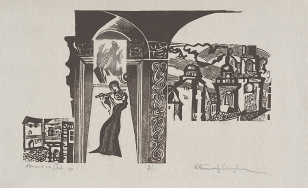 Bogna Krasnodębska-Gardowska, Print „Concert for Flute”, ZKnW-PZS 6066
Bogna Krasnodębska-Gardowska, Print „Concert for Flute”, ZKnW-PZS 6066
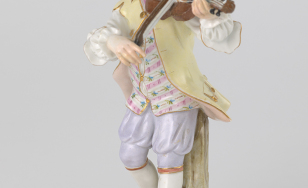 Johann Joachim Kaendler, model by Friedrich Elias Meyer, Figure “Violinist”, ZKnW-PZS 9959
Johann Joachim Kaendler, model by Friedrich Elias Meyer, Figure “Violinist”, ZKnW-PZS 9959
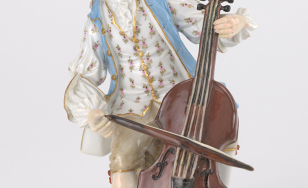 Johann Joachim Kaendler, model by Friedrich Elias Meyer, Figure “Cellist”, ZKnW-PZS 9961
Johann Joachim Kaendler, model by Friedrich Elias Meyer, Figure “Cellist”, ZKnW-PZS 9961
LOG IN
REGISTRATION
